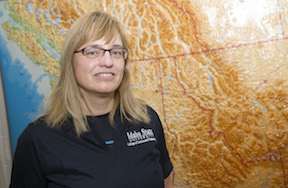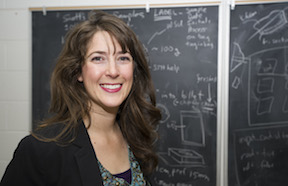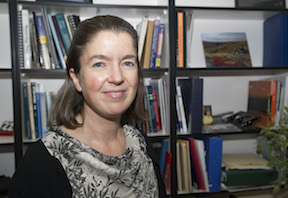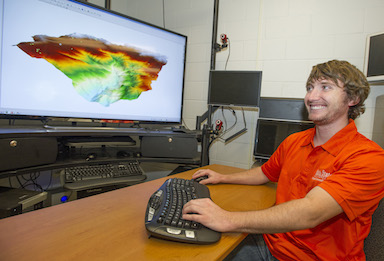Idaho State University researchers work on virtual watershed project to better model Idaho’s and West’s snowpack
November 26, 2014
Researchers in Idaho State University’s geosciences department are working on a virtual watershed project to make better, easy-to-use computer models of Idaho’s and the West’s snowpack to help water users plan better.
 “Imagine that scientists get to play with this virtual watershed and they can see what happens if there is a 90-percent snowpack and it all melts in a few days and they can see what the outcomes and consequences are of that,” said Donna Delparte, ISU assistant geosciences researcher, who is ISU’s lead on the project. “Scientists will have the ability to start playing out different scenarios in this virtual watershed.”
“Imagine that scientists get to play with this virtual watershed and they can see what happens if there is a 90-percent snowpack and it all melts in a few days and they can see what the outcomes and consequences are of that,” said Donna Delparte, ISU assistant geosciences researcher, who is ISU’s lead on the project. “Scientists will have the ability to start playing out different scenarios in this virtual watershed.”
At ISU, Delparte is working with geosciences Assistant Professors Sarah Godsey and Shannon Kobs Nawotniak. The ISU researchers are in turn working with collaborators at University of Idaho, Boise State University and at universities in Nevada and New Mexico, and Danny Marks at the U.S. Agricultural Research Office in Boise.
These multi-state collaborators are in the second year of a three-year, $6 million project called the Western Consortium for Watershed Analysis, Visualization and Exploration (WC-WAVE), a National Science Foundation project funded through the EPSCoR program.
 “We are building a computational model that will ideally be able to be used at other places in Idaho and the U.S. to understand how snow is falling and is redistributed and recharging the watershed,” said Nawotniak.
“We are building a computational model that will ideally be able to be used at other places in Idaho and the U.S. to understand how snow is falling and is redistributed and recharging the watershed,” said Nawotniak.
Nawotniak is an expert on volcanoes and the distribution of ash. She is working with Godsey, a hydrologist, to transfer Nawotniak’s knowledge about the distribution of ash by wind, to how wind distributes snow.
“One of the things we’re really looking at is how wind redistributes snow,” Godsey said. “We have enough wind that it can really matter on how snow is redistributed and we care about these different pieces of the snowpack model because it influences how much water we have available to us, when it arrives and what kind of vegetation that can be supported throughout the mountains of Idaho.”
“This type of model,” said Nawotniak, “gives us the tools to look forward and see worst-case scenarios, and help us do what we need to prepare. It is not a program that will help us predict something like climate change, but if we are impacted by climate change, if things get wetter or dryer, it will help us model those effects.”
 Both Nawotniak and Godsey emphasized the visualization of the computational model is an extremely important part of this project, and that is where Delparte’s expertise comes into play.
Both Nawotniak and Godsey emphasized the visualization of the computational model is an extremely important part of this project, and that is where Delparte’s expertise comes into play.
“We want to make this accessible to users across a variety of backgrounds and skill levels to be able to see what their options are, what the output is and to get fast feedback to interact with the model more directly,” Nawotniak said.
There are many potential uses and users of this project.
“In Idaho, water is king,” Godsey said. “From agricultural users to fishermen, all sorts of people really care about water. A lot of models we have predicting the snowpack and water available are based on the past, but there may be  variables outside our experience range that we may want to understand. We might have fire or drought, or what happens if vegetation is gone? That is where the value of a model like ours comes in.”
variables outside our experience range that we may want to understand. We might have fire or drought, or what happens if vegetation is gone? That is where the value of a model like ours comes in.”
For more information on the WC-WAVE project, visit idahostateu.com/WC-WAVE.
Categories:
